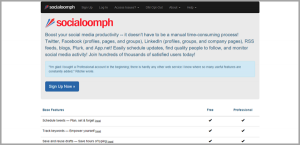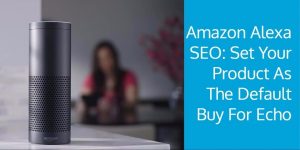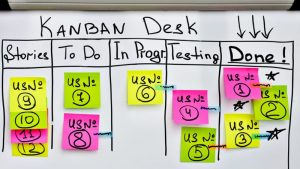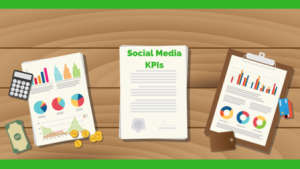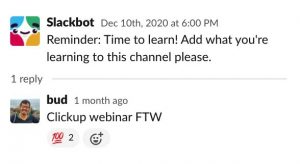Every startup needs a website. I’m stating the obvious. So I’ll restate. Every successful startup needs a great website that meets its business goals: awareness, reach, virality, conversion. Building (or rebuilding) the right one takes a lot of effort. Here are some pointers on how you should conceive and plan your site. – TM
 It’s funny to think that the web, which hundreds of millions of people use every day for shopping, dating, gaming, news, and socializing, began as a technology to help improve, of all things, physics research—a topic of interest to only a fraction of the world’s population. Yet today, the web is huge. According to What Technology Wants by Kevin Kelly, himself a chronicler of the early days of the web, it holds more than a trillion pages.
It’s funny to think that the web, which hundreds of millions of people use every day for shopping, dating, gaming, news, and socializing, began as a technology to help improve, of all things, physics research—a topic of interest to only a fraction of the world’s population. Yet today, the web is huge. According to What Technology Wants by Kevin Kelly, himself a chronicler of the early days of the web, it holds more than a trillion pages.
Twenty-plus years since the first website was created by physics researcher Tim Berners-Lee (since knighted by the Queen of England) at the European Organization for Nuclear Research (CERN) in 1991, we are already several generations away from its original Spartan black text with blue hyperlinks on a white page. We’ve moved from professional design to rich media and animation, to social media inclusion, to the requirement of usability and availability on mobile devices. All of these innovations have been driven by the insatiable consumer demand for web content and the critical role the web has assumed in modern business.
With the amount of time consumers spend online and the use of the web by businesses searching for partners and suppliers, the web has become a vital marketing tool. A well-constructed website has been transformed from merely expected to an indispensable mechanism for product differentiation and competitive advantage. Despite the centrality of the web in both our business and our personal lives, however, many marketing teams are not truly optimizing their websites.
This post will lay out the process for developing a new website from scratch, starting with the establishment of website goals and moving through the primary considerations of usability, design, and content.
Establishing Website Goals
The initial step in utilizing the web as a marketing tool is, of course, to create a viable website. Before you undertake any development work on the site, however, you need to identify the site’s primary goals. Is the site intended to educate, inform, entertain, sell a product, or some combination of these? The goals, along with the target audience, will determine the site’s functionality, design, and content. Sharing these goals with the web team, management, and rank-and-file employees will help avoid any number of artistic and functional arguments, as well as increase the likelihood that the project will be a success. You should also involve customers and partners in the process if possible—the site is intended for them, after all.
To clearly define your needs, goals, and objectives, you should ask yourself a few detailed questions:
- What are your primary business objectives, and how can the website help you achieve them?
- Who will use your website, and what are their tasks and goals?
- What information and functions do your users need, and in what form do they need them?
- How do users think your website should work?
- What hardware and software will the majority of people use to access your site? Will they be using a laptop, a tablet, a smartphone, or some combination of these tools?
Site Fundamentals – Usability, Design, and Content
After you have agreement on your goals, you are ready to begin work on the three fundamental aspects of your site: usability, design, and content.
Usability
Usability measures the quality of a user’s experience when interacting with a product or system—whether a website, a software application, mobile technology, or any user-operated device. In general, usability refers to how well individuals can use a product to achieve their goals and how satisfied they are with that process. As it relates specifically to the web, usability is the measure of the quality of customers’ experiences when they interact with your website.
Usability is a combination of several factors:
- Ease of learning – How fast can a user who has no previous experience with the website learn it sufficiently well to accomplish basic tasks?
- Efficiency of use – Once experienced users have learned to use the website, how fast can they accomplish tasks? A site that is efficient to use will likely bring users back. This tendency, along with the quality of the content, will help achieve what web developers call “stickiness,” meaning the amount of time users spend on a site and the likelihood they will return.
- Memorability – If users have visited the website before, can they remember its setup and functions well enough to use it effectively the next time? Or, do they have to start all over again and relearn everything? When users must remember information on one web page for use on another, they can remember only about three or four items for a few seconds.
- Performance – No matter how intuitive or efficient the site is to navigate, poor performance is a killer. A site’s performance can be affected by the servers and network that host it, the network of the user, and the content on the site. Users become frustrated if a web page does not load immediately. A study by KISSmetrics showed that 25 percent of users abandoned a website after waiting just four seconds, and the majority of mobile users would abandon a site after ten seconds. In the same study, KISSmetrics found that every additional second of load time reduces conversions by 7 percent. When designing a new site, or augmenting an existing one, always test the performance to make sure the combination of content and a typical user’s network speed does not cause slowdowns.
Design
The design of a website must support usability. In addition, the site is an expression of your brand, so its design should reflect your identity. Keep in mind that users will make an immediate judgment when they view your site, unconsciously assessing whether it is trustworthy, welcoming, relevant, and professional. Your design should support the image you want to portray.
Below are specific design considerations for the different parts of a website.
Home Page
A home page should concisely communicate the site’s purpose, and it should clearly indicate all of the major options available on the site. Generally, on laptop and desktop screens, the bulk of the home page should be visible in a single screen or “above the fold”—a term borrowed from newspaper publishers meaning the top half of a folded newspaper—and it should contain a limited amount of text. Content you want all visitors to see must be placed above the fold.
Designers should provide easy access to the home page from every page in the site so users can get back to where they started. The first action of most users is to scan the home page for link titles and major headings. Requiring users to read large amounts of text can slow them considerably. Some readers will avoid reading it altogether.
Navigation
Navigation refers to the methods people use to get to information within a website. A site’s navigation scheme and features should enable users to find and access information effectively and efficiently. Create a common site-wide navigational scheme to help users learn and understand the structure of the site. Use the same scheme on all pages by consistently locating tabs, headings, and lists. Many users expect to find a site map—a kind of table of contents—in the footer of the page. Locate critical navigation elements in places that will suggest “clickability.” For example, lists of words placed in the left or right panels are generally assumed to be links. Also, don’t get too cute with the words in the navigation. Your goal should be comprehension, not originality.
Lastly, users expect to be able to search within a site to find what they need. Make sure to provide this capability. A search box should be located in the top right corner of the home page and subpages.
Subpage Layout
Subpages are pages that are one level down from the home page. They are sometimes called second-level pages, with the home page being the top-level page.
Well-designed headings make it easier for users to scan and read written material. Designers should strive to create unique and descriptive headings and to incorporate as many headings as is necessary to enable users to find what they are looking for. Headings should provide strong cues that orient users and inform them about page organization and structure. Headings also help classify information on a page. Each heading should be helpful in finding the desired target.
On long pages, include a list of contents with links that take users to the corresponding content farther down the page. Also, provide feedback to let users know where they are in the site. A common method to accomplish this goal is to insert breadcrumbs —horizontally arranged text at the top of the page, above the headline, that tells users where they are in the site’s navigation and helps them find their way back “home.”
A well-designed website will enable users to access important content from more than one link. Establishing multiple paths to access the same information can help users locate what they need. When you’re designing the site, always remember that different users will try different approaches to finding information and may also search for information using different terms.
One fundamental rule for a user-friendly design is to display a series of related items in a vertical list rather than as continuous text. A well-organized vertical list format (e.g., bullets or grids) is much easier to scan than horizontal text, whether prose or a list.
Finally, your site’s graphics should add value to and increase the clarity of the information contained on the site. Relevant pictures are often more powerful than labels in compelling a user to take a desired action.
Alt Text
Another basic design rule is to use text equivalents for all nontext elements, including images, graphical representations of text and symbols, image map regions, animations (e.g., animated GIFs), sounds, audio files, and video. Text equivalents are referred to as alt text, or alt tags, and are useful for search engine optimization as well as usability. Users will often hover their pointer over an image to read the alt text.
Content
Content is simply the information provided on a website. For a website to achieve its goals, the content needs to be engaging, relevant, and appropriate to the audience. Below are a few fundamental rules for selecting and creating useful content:
- Clear language – When you are preparing prose content for a website, use familiar words, and avoid the use of jargon, just as you would for good marketing collateral. If you must use acronyms and abbreviations, make certain they are defined on the page in language that typical users will understand. Shorten for readability—minimize the number of words in a sentence and the number of sentences in a paragraph. Make the first sentence of each paragraph descriptive of the remainder of the paragraph. Write in an affirmative, active voice. Limit the amount of prose on each page.
- Prioritize – Putting critical information near the top of the site and ensure that all necessary information is available without slowing down the user with unneeded information.
- Build for scanning – People scan before they read, so structure each page to facilitate scanning. Use clear, well-located headings; short phrases and sentences; and small, readable paragraphs. Again, use bulleted lists or grids where appropriate.
- Group – Make certain to group together all of the information that is related to a topic. This system minimizes the need for users to search or scan the site for related information. Users will assume that items that are placed in close spatial proximity, or that share the same background color, belong together conceptually.
- Visual aids –Tables, graphics, and other visuals are great for aiding understanding. Make sure to pick the best one. Presenting quantitative information in a table (rather than as a graph), for example, makes it easier to read the numbers themselves. Presenting it as a graph illustrates trends or relative size. Usability testing can help you determine when users will benefit from using graphs, tables, or other visualizations.
- Less is more – Do not overload pages or interactions with extraneous information. Displaying too much information can overwhelm users and hinder their ability to assimilate the information they need. Help users focus on their desired tasks by excluding information that task analysis and usability testing indicate is not relevant.
Once you’ve got all this planning done, it’s on to wireframes and the fun work of development. You will no doubt need to add in all kinds of tools and utilities to help you manage and measure your site – from Google Analytics to Marketo to Optimizely and beyond. Putting these in place early can make like easier as you grow.
Business & Finance Articles on Business 2 Community(192)

